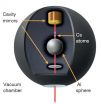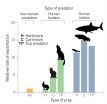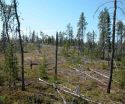(Press-News.org) In-depth interviews conducted by researchers at the Johns Hopkins University School of Medicine of 20 young women attending an urban sexually transmitted disease clinic have documented a variety of unexpected, unintended sexual encounters linked to their alcohol use before sex occurs.
Links between alcohol use and risky or deleterious sexual encounters are not necessarily new, say investigators, but this small study identifies very specifically the disconnect between what young women have in mind when they drink and have sex and what really happens.
"The idea behind our study was to first unveil what women expect to happen, and then uncover what consequences really occur so that we can challenge unrealistic expectations and develop better interventions that lead to safer experiences," says Geetanjali Chander, M.D., M.P.H, associate professor of medicine at the Johns Hopkins University School of Medicine.
The interviews and results, described online in the July 27 edition of Women's Health Issues, are a follow-up to a previous study that reported the sexual expectations related to alcohol use held by the same group of women.
In this study, Chander and her colleagues conducted in-depth interviews between December 2009 and August 2010 with 20 African-American women attending a Baltimore clinic that treats sexually transmitted diseases. All study participants reported binge drinking in the past six months or engaging in intercourse while under the influence of alcohol.
According to the findings, five major unexpected sexual events happened with substantial frequency as revealed by the participants: sex with new partners; alternative sexual activities, including anal sex and "rough" sex; unprotected sex; blacked-out sex or sex occurring during alcohol-related amnesia; and rape.
In addition, several themes emerged among the interview subjects when describing their encounters, primarily a sense of sexual victimization. The women's discussions included words such as "predator," "opportunist" and "vulture."
In contrast to such descriptions, literature to date has shown that women tend to think alcohol will improve their sex drive, minimize their sexual inhibition or make the sexual experience better. "Ensuring that women understand this disconnect may help them focus on the consequences more than the positive expectation," says Dinah Lewis, a medical student at Johns Hopkins University School of Medicine.
"Experiences like those documented in our study happen everywhere -- on college campuses, in cities and small towns," says clinical psychologist Heidi Hutton, Ph.D., associate professor of psychiatry and behavioral sciences at the Johns Hopkins University School of Medicine. "The more important task for us is to develop interventions that empower women and men to make decisions that keep them safe."
When asked how they might be safer when drinking in public, Hutton says, a common suggestion from the interview subjects was to watch out for each other. "Women feel safer when they travel in packs, and one way participants suggested staying safe is to never let anyone get separated from the pack," she says.
Chander says they hope to conduct further studies to better document and understand men's expectations for drinking and sex and the outcomes they experience.
"Even though this particular study is small in size, it has led us to further explore needed interventions that may help women stay safer and healthier," says Chander.
INFORMATION:
The work was funded by the National Institute on Alcohol Abuse and Alcoholism under grant number NIAAA R01AA018632.
The other investigators on the study are Tracy Agee and Mary McCaul from the Johns Hopkins University School of Medicine.
Media contacts:
Marin Hedin, 410-502-9429, mhedin2@jhmi.edu,
Lauren Nelson, 410-955-8725, lnelso35@jhmi.edu
Helen Jones, 410-502-9422, hjones49@jhmi.edu
According to a survey conducted by Rhode Island Hospital researchers, there is significant variability regarding how clinicians manage catheters placed in the arteries of patients in intensive care units. Some practices may increase risk of infection associated with these catheters. Fewer than half of those surveyed complied with current Centers for Disease Control and Prevention (CDC) infection prevention guidelines for arterial catheter insertions. The study was published today in Critical Care Medicine.
"Barrier precautions are employed inconsistently by critical care ...
Washington, DC - August 20, 2015 - Swedish exchange students who studied in India and in central Africa returned from their sojourns with an increased diversity of antibiotic resistance genes in their gut microbiomes. The research is published 10 August in Antimicrobial Agents and Chemotherapy, a journal of the American Society for Microbiology.
In the study, the investigators found a 2.6-fold increase in genes encoding resistance to sulfonamide, a 7.7-fold increase in trimethoprim resistance genes, and a 2.6-fold increase in resistance to beta-lactams, all of this without ...
PHOENIX, Ariz. -- Aug. 20, 2015 -- A study by the Translational Genomics Research Institute (TGen) and other major research institutes, found a new set of genes that can indicate improved survival after surgery for patients with pancreatic cancer. The study also showed that detection of circulating tumor DNA in the blood could provide an early indication of tumor recurrence.
In conjunction with the Stand Up To Cancer (SU2C) Pancreatic Cancer Dream Team, the study was published in the prestigious scientific journal Nature Communications.
Using whole-exome sequencing ...
If dark energy is hiding in our midst in the form of hypothetical particles called "chameleons," Holger Müller and his team at the University of California, Berkeley, plan to flush them out.
The results of an experiment reported in this week's issue of Science narrows the search for chameleons a thousand times compared to previous tests, and Müller, an assistant professor of physics, hopes that his next experiment will either expose chameleons or similar ultralight particles as the real dark energy, or prove they were a will-o'-the-wisp after all.
Dark energy ...
Management of boreal forests needs greater attention from international policy, argued forestry experts from the International Institute for Applied Systems Analysis (IIASA), Natural Resources Canada, and the University of Helsinki in Finland in a new article published this week in the journal Science. The article, which reviews recent research in the field, is part of a special issue on forests released in advance of the World Forestry Congress in September.
"Boreal forests have the potential to hit a tipping point this century," says IIASA Ecosystems Services and Management ...
This news release is available in Japanese.
Humans are just one of many predators in this world, but a new study highlights how their intense tendency to target and kill adult prey, as well as other carnivores, sets them distinctly apart from other predators. As humans kill other species in their reproductive prime, there can be profound implications -- including widespread extinction and restructuring of food webs and ecosystems--in both terrestrial and marine systems. To evaluate the nature of human predation compared to nonhuman predation, Chris Darimont et al. conducted ...
This news release is available in Japanese.
In this special issue, the editors of Science invite experts to provide closer looks at how natural and human-induced environmental changes are affecting forests around the world, from the luscious, diverse forests of the tropics, to the pristine, resilient boreal forests of the north. The special issue is complemented by a package from Science's news department.
Amid extreme environmental and climate changes, Susan Trumbore and colleagues highlight the urgency of monitoring forest health, especially ...
This news release is available in Japanese.
Amid continued difficulties around assessing bioweapons threats, especially given limited empirical data, Crystal Boddie and colleagues took another route to gauge their danger: the collective judgment of multiple experts. The experts' opinions on bioweapons-related risks were quite diverse, the Policy Forum authors say, adding to the challenge around developing a regulatory system for legitimate dual use research. Boddie et al. explain how they employed a Delphi Method study to query the beliefs and opinions of 59 experts ...
An examination of the immune genes of the southern African Khoe-San people has revealed a completely new kind of mutation, according to researchers at the Stanford University School of Medicine. The gene variant likely contributes to healthier babies, although the variant can also lower resistance to disease.
The findings grew out of a long-term effort by Peter Parham, PhD, professor of structural biology and of microbiology and immunology, to understand how immune system genes make us reject organ transplants.
A paper detailing the findings will be published online ...
CORVALLIS, Ore. - Myriad regulations and certification requirements around the world are making it virtually impossible to use genetically engineered trees to combat catastrophic forest threats, according to a new policy analysis published this week in the journal Science.
In the United States, the time is ripe to consider regulatory changes, the authors say, because the federal government recently initiated an update of the overarching Coordinated Framework for the Regulation of Biotechnology, which governs use of genetic engineering.
North American forests are suffering ...


